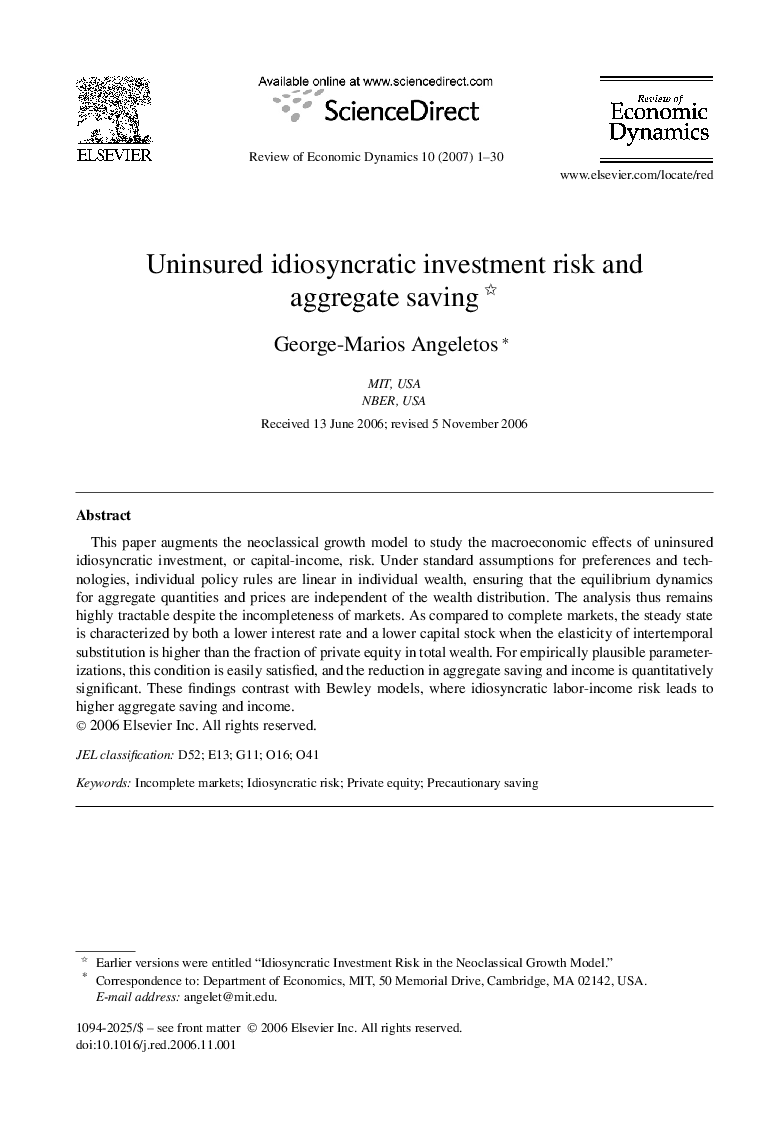| Article ID | Journal | Published Year | Pages | File Type |
|---|---|---|---|---|
| 986554 | Review of Economic Dynamics | 2007 | 30 Pages |
This paper augments the neoclassical growth model to study the macroeconomic effects of uninsured idiosyncratic investment, or capital-income, risk. Under standard assumptions for preferences and technologies, individual policy rules are linear in individual wealth, ensuring that the equilibrium dynamics for aggregate quantities and prices are independent of the wealth distribution. The analysis thus remains highly tractable despite the incompleteness of markets. As compared to complete markets, the steady state is characterized by both a lower interest rate and a lower capital stock when the elasticity of intertemporal substitution is higher than the fraction of private equity in total wealth. For empirically plausible parameterizations, this condition is easily satisfied, and the reduction in aggregate saving and income is quantitatively significant. These findings contrast with Bewley models, where idiosyncratic labor-income risk leads to higher aggregate saving and income.
